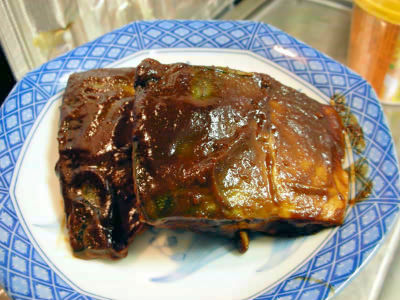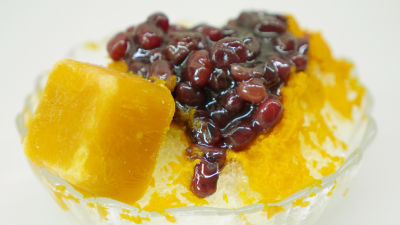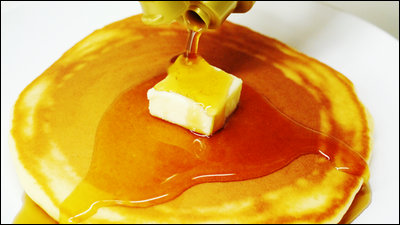Tsubuan is surprisingly easy to make, and you can adjust the sweetness and firmness, making it nice to be able to make it in large quantities.

There are many people who like foods made with tsubuan, such as zenzai, Ogura toast, and Uji Kintoki. However, when you buy commercially available Tsubuan, you tend to run into problems such as ``It's too sweet and I can't eat a lot'' or ``It's too watery than I like''. If you can make your own Tsubuan, you can enjoy it to your heart's content with the sweetness and firmness of your choice. Tsubuan is surprisingly easy to make, so I've put together a basic guide on how to make it.
There are only three ingredients: ``adzuki beans,'' ``sugar equal to the amount of adzuki beans,'' and ``a pinch of salt.'' This time I bought 250g of red beans, so I also prepared 250g of sugar. Any type of sugar is OK, including caster sugar, granulated sugar, and cane sugar.

How to make Tsubuan is as follows. First, wash the red beans.

Next, put the azuki beans in a pot and add water about 3 times the volume of the adzuki beans. This water will be discarded later, so just use the eye amount.

Heat over medium heat, and once the water boils, continue boiling for 15 minutes.

After boiling for 15 minutes, throw away all the hot water.

Return the beans to the pot and add water equal to three times the volume of the beans. Since the adzuki beans are absorbing water and getting bigger, you will need to add more water from the first time.

Add water and heat over medium heat. As it heats up, more and more scum will come out, so remove it with a spoon.

Once the water boils, reduce the heat until a few bubbles appear and simmer for 30 minutes.

If the beans start to come out of the water during 30 minutes of simmering, add a little more water. If you add too much water at once, the temperature in the pot will drop, so be sure to add it little by little.

After simmering for 30 minutes, mash the red beans with your fingers to check the doneness. If you can't crush them with light pressure, you may still need to add more simmering time. This time it was still hard so I continued to simmer it for a few minutes.

If it collapses without resistance when you pinch it lightly with your fingers, proceed to the next step.

Once the red beans are boiled until soft, add about half the sugar.

Stir to dissolve all the sugar, being careful not to crush the red beans.

Once the sugar has dissolved, add the rest of the sugar.

Mix again to completely dissolve the sugar.

Once the sugar has dissolved, adjust the heat until a few bubbles appear and simmer for 40 minutes.

Stir every few minutes to ensure the beans are evenly heated.

After 40 minutes, it will become thick as shown below. At this stage, it will be watery and sluggish, but if you keep the heat as it is and continue to simmer while stirring slowly, the water will gradually disappear and it will become hard, so keep simmering until it reaches your desired consistency. The trick is to turn off the heat just before the desired hardness is reached, as it will become a little harder once it cools down.

This time, I wanted to make the sweet bean paste with less moisture, so I turned off the heat just before the soupy part disappeared completely.

Turn off the heat and add a little salt. This time I added 1/2 teaspoon.

Mix it so that the salt is distributed throughout and it's done.

The completed Tsubuan looks like this.

Remove the completed Tsubuan into a large plate or vat and let it cool.

When I tried it, it turned out to be a firmer bean paste that was less sweet than the commercially available bean paste. This time, I made a firm tsubuan with 250g of azuki beans, 250g of sugar, and 1/2 teaspoon of salt, but using this tsubuan as a base, I thought, ``I want it to be a little less sweet, so I'll use less sugar,'' or ``I'll use it for things other than sweets.'' The appeal of making your own is that you can change the mixture each time you make it to get the flavor you like, like adding more salt because you want to use it for something like this. Although it takes time, it does not require difficult operations, so even beginners can easily make it.

Also, if you make your own tsubuan, you can make a large amount of tsubuan at once, so you can use it luxuriously, such as putting a large amount of tsubuan on top of mochi.

It is also possible to make ``Ogura Toast with more crushed bean paste than bread'' like this.

If you don't finish eating the Tsubuan, you can wrap it in plastic wrap and store it in the refrigerator or freezer. Please eat it quickly before it spoils.

Related Posts:
in Gastronomic Adventure, Column, Posted by log1o_hf







